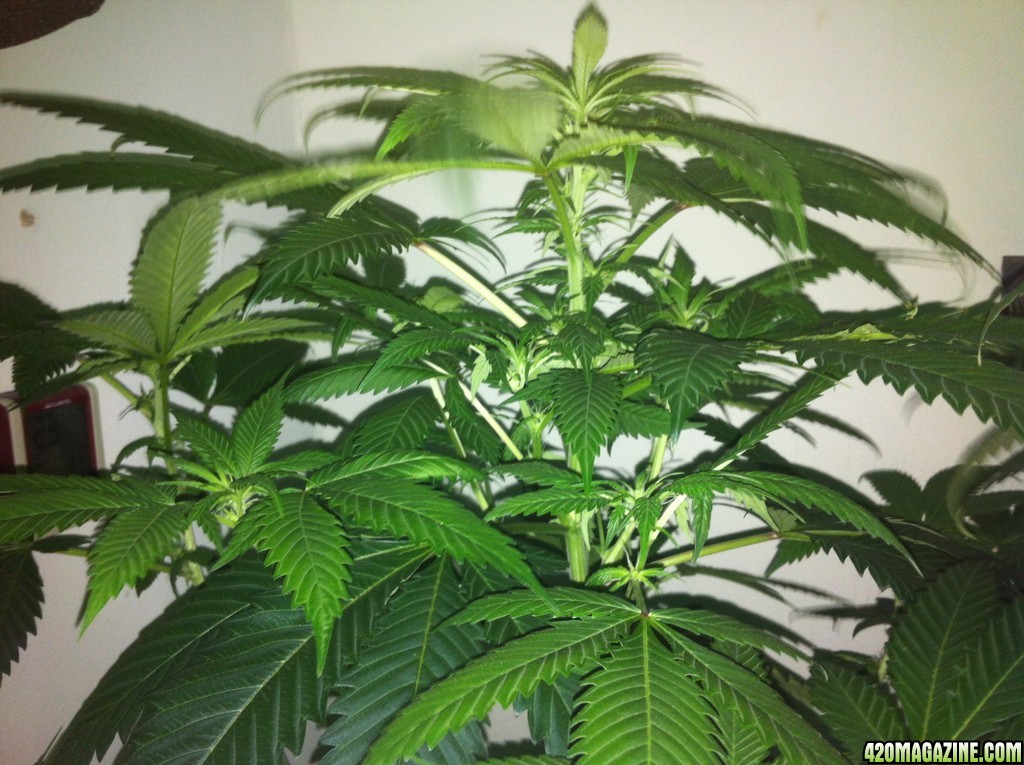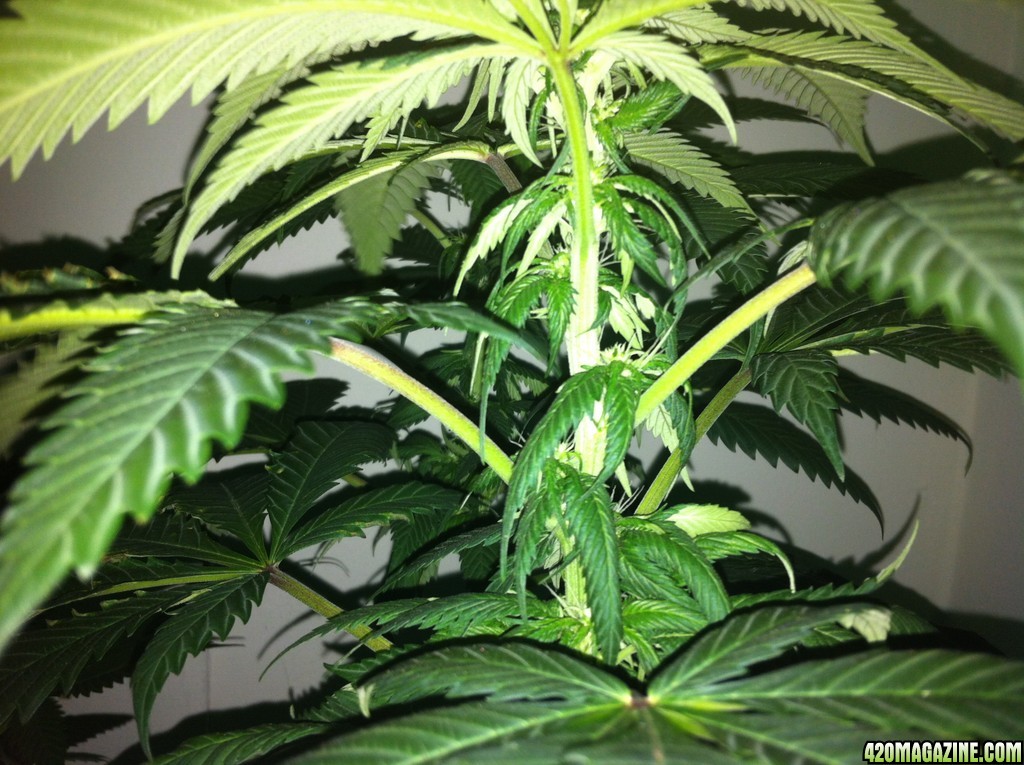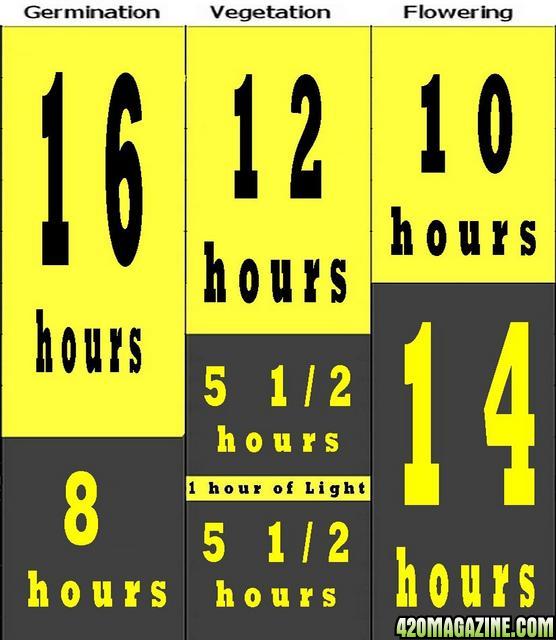Ok im pointing out the difference with light schedules. Major difference in growth. These are the same strains under the same lighting and conditions. Same nutes. I just wanted to point this out because everyone says GLR sucks and its not worth the time. Its not the point of it speeding up the veg process, its the fact that it will get you a much bushier plant in a whole and it saves electricity. Both lighting grow the plant at the same speed. GLR is just great because you can cut down on electricity and run other equipment if necessary or more grows for that matter. Its also for growers who are scared or nervous to go with a 1000w lamp because of the high wattage. Make a 1000w usage look like a 600w usage on your bill. etc.
And this is done with NO training (LST, super crop, pinching, topping, FIM). I let them grow with out disturbing there veg.
PS. GLR wouldnt be great for sativa dominate plants. Since they grow thin and tall. IMO I think sativas would be great for SOG for sure. Thats what im doing with my Cheese Wiz Qush. (Check out my FIRST JOURNAL. Still in progress)
GLR Light Schedule. Notice how the side branches grow out all the way up the main stock. Which is only left with about 4 nodes thats tight and close to the main stock. GLR focuses on the whole plant instead of lateral growth. This is good for SCROG or if you just want a bushy plant(s).

16/8-18/6 Light Schedule. This lighting only focuses on lateral growth. The side branches will not grow as well but if height isnt a issue then it is perfect. Notice how theres about 7 nodes of tightness around the main stalk. This lighting is perfect for SOG grows.

And this is done with NO training (LST, super crop, pinching, topping, FIM). I let them grow with out disturbing there veg.
PS. GLR wouldnt be great for sativa dominate plants. Since they grow thin and tall. IMO I think sativas would be great for SOG for sure. Thats what im doing with my Cheese Wiz Qush. (Check out my FIRST JOURNAL. Still in progress)
GLR Light Schedule. Notice how the side branches grow out all the way up the main stock. Which is only left with about 4 nodes thats tight and close to the main stock. GLR focuses on the whole plant instead of lateral growth. This is good for SCROG or if you just want a bushy plant(s).
16/8-18/6 Light Schedule. This lighting only focuses on lateral growth. The side branches will not grow as well but if height isnt a issue then it is perfect. Notice how theres about 7 nodes of tightness around the main stalk. This lighting is perfect for SOG grows.





